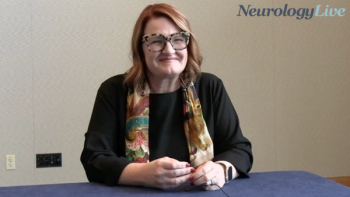Newly published in the New England Journal of Medicine, a phase 3 double-blind, placebo-controlled, crossover trial (NCT05163288) showed that treatment with N-acetyl-l-leucine (NALL) significantly reduced neurologic signs and symptoms over 12 weeks among patients with Niemann-Pick disease type C, rare lysosomal storage disorder.1 NALL, an agent that potentially ameliorates lysosomal and metabolic dysfunction, displayed a better neurologic status effect on patients with this disorder in comparison with placebo.
Among 60 patients aged between 5 years and 67 years of age, investigators observed a mean change from baseline in the total score on the Scale for the Assessment and Rating of Ataxia (SARA) of −1.97 (±2.43) points following 12 weeks of receiving NALL and −0.60 (±2.39) points after 12 weeks of receiving placebo (least-squares mean difference, −1.28 points; 95% CI, −1.91 to −0.65; P <.001). Notably, the mean change in the modified SARA total score was similar to that in the SARA total score (least-squares mean difference, −0.96 points; 95% CI, −1.45 to −0.46).
Top Clinical Takeaways
- NALL demonstrated a significant reduction in neurologic signs and symptoms over 12 weeks compared to a placebo in a phase 3 trial involving patients with Niemann-Pick disease type C.
- The trial observed improvements in the Scale for the Assessment and Rating of Ataxia (SARA) scores, suggesting a positive impact on the neurologic status of patients.
- Although the study identified some limitations, such as the 12-week treatment duration, further research and an ongoing extension phase are expected to provide more insights into NALL's effects on disease progression and adverse events.
Conducted by lead author Tatiana Bremova-Ertl, MD, PhD, head of the neurometabolic outpatient clinic at Insel Gruppe, and colleagues, patients 4 years of age or older with Niemann-Pick disease type C were randomly assigned in a 1:1 ratio to NALL for 12 weeks followed by placebo for 12 weeks or placebo for 12 weeks followed by NALL for 12 weeks. The participants were administered the agent or matching placebo orally 2 to 3 times per day, those who were 4 to 12 years of age received weight-based doses (2 to 4 g per day) and patients 13 years of age or older received a dose of 4 g per day. The primary end point of the study was the total score on the SARA and the secondary end points included scores on the Clinical Global Impression of Improvement (CGI-I), the Spinocerebellar Ataxia Functional Index (SCAFI), and the Modified Disability Rating Scale (mDRS). In addition, crossover data from 2 of the 12-week periods in each group were included in the comparisons of NALL with the placebo.
READ MORE: European Commission Approves Omaveloxolone as First Therapy for Friedreich Ataxia
Similarly with results from the primary end point in comparing NALL with the placebo, investigators observed mean differences of −0.6 points (95% CI, −1.1 to −0.1) in the changes of scores for the investigator-rated CGI-I; −0.7 points (95% CI, −1.2 to −0.2) for the caregiver-rated CGI-I; −0.5 points (95% CI, −1.1 to 0.1) for the patient-rated CGI-I. Additionally, authors noted mean differences of −0.029 points (95% CI, −0.048 to −0.010) in the changes in scores for the mDRS (mean baseline scores before receipt of the first dose of NALL, 0.477 [±0.124]; before receipt of the first dose of placebo, 0.475 [±0.142]); and 0.07 (95% CI, −0.0 to 0.15) for the SCAFI (mean baseline scores before receipt of the first dose of NALL, −0.39 [±1.04]; before receipt of the first dose of placebo, 0.35 [±1.02]).
In total, 79 adverse events (AEs) occurred for those on NALL (patients, n = 36), and 75 events occurred with placebo (patients, n = 30). Only 3 patients had 1 transient AE each related to NALL as assessed by the investigator. These included anal incontinence, restless legs, and rosacea. Investigators reported a 5% higher incidence of upper respiratory tract infection in the patients who received NALL (10%) compared with placebo (5%). Additionally, the patients who received NALL (7%) had an 8% lower incidence of falls in comparison with those who received placebo (15%). Notably, epilepsy occurred only once in a patient that received NALL. Overall, authors noted no serious AEs occurred related to NALL or placebo. One death was reported because of aspiration pneumonia after a preplanned placement of a percutaneous endoscopic gastrostomy tube, which was not related to the treatment in the trial.
All told, limitations of the trial included the 12-week duration of active treatment and that the study only assessed the symptomatic effects of NALL. Authors noted the focus on symptomatic end points excluded patients younger than 4 years of age, asymptomatic patients, or patients with advanced disease who would not be able to complete functional assessments. In addition, the SARA has not been formally validated for use in patients with Niemann–Pick disease type C and there is no validated biomarker for this disease population or surrogate end point that is suggestive of clinical improvement.
Authors noted that larger and longer studies are needed to establish the long-term effect of this treatment in patients with Niemann–Pick disease type C. The findings from the current study are consistent with results produced in a previous phase 2b trial (NCT03759639) which involved pediatric and adult patients with Niemann–Pick disease type C, demonstrating that scores on the SARA, mSARA, and CGI-I improved with NALL treatment although they had subsequently worsened in the post-treatment washout period.2 Overall, results showed a low incidence of treatment-related adverse events in the phase 2b trial.
REFERENCES
1. Bremova-Ertl T, Ramaswami U, Brands M, et al. Trial of N-Acetyl-l-Leucine in Niemann-Pick Disease Type C. N Engl J Med. 2024;390(5):421-431. doi:10.1056/NEJMoa2310151
2. Bremova-Ertl T, Claassen J, Foltan T, et al. Efficacy and safety of N-acetyl-L-leucine in Niemann-Pick disease type C. J Neurol. 2022;269(3):1651-1662. doi:10.1007/s00415-021-10717-0



































